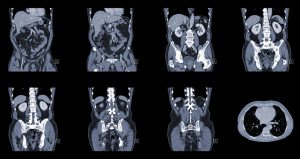Schrödinger’s CT: Quantum Life after a Cancer Diagnosis
Ordering CT, MRI, or PET scans for my patients when they feel well always makes me nervous. As a radiation oncologist, I’ve chosen to frequently make observations that potentially find active, progressive cancer. And this creates an existential crisis that scares me—but not as much as it scares my patients.

With each test, I set in to motion a real-life application of the quantum physics paradox of Schrödinger’s cat, which theorizes that the act of observation may determine the fate of a cat in a sealed box. With a CT scan used as the “box,” the cancer is either alive or dead, but until I actually look, it’s in a superposition state of both. It is the act of observation that collapses the potential for either in to one result.
The person linked to this paradox often feels the same way. From the moment she knows a CT scan is needed and until she hears the results, she lives in this quantum state of being, both healthy and ill. One of my friends, Dave deBronkart, said that many patients use the term scanxiety.
Sometimes tests do show something. And the questions, spoken or silent, are always there: Is it scarring from the radiation or cancer on the CT scan? If it’s cancer, can you cure it? Will it hurt? How much time do I have left? And more.
Often I see no signs of cancer. But I can’t say, “you’re cured,” only “no news is good news.” I can use the term “NED”—no evidence of disease. Still, a cancer diagnosis generates eternal vigilance and uncertainty. This uncertainty revives at every visit, during treatment, and afterwards. Imaging and blood work only heighten anxiety.
When someone feels well, I have to divine meaning from test results and then share what may be life or death information. A patient, awaiting diagnosis and prognosis, may hang on my words; he may try to make sense of my utterances. If I do my job well, I don’t keep him in that uncertain dual state of health and illness any longer than necessary. Providing straightforward explanations helps.
There are other ways to look at it. Some argue that it’s a false duality, the cancer is there or it isn’t. Others would say that it’s relational—both doctor and patient have information about the CT scan and their joint interactions define the interpretation. But from my experience, the sense of limbo for patients is more common.
I have to monitor my patients’ health by listening, physical exam, and sometimes testing. The uncertainty triggered by ordering necessary scans for symptoms or signs of cancer is unavoidable. New data suggest that imaging itself may not add a lot to a good history and physical exam, but we also need them for clinical trials and sometimes these tests are necessary. But by limiting tests to those that are essential when patients feel well, I can help reduce stress for both them and me. I don’t like that dual state of health and dying either.
This post was originally published on ASCO Connection.